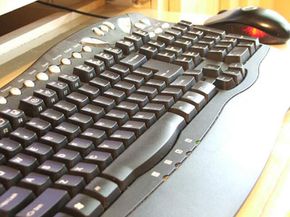The Cyber World
All of this hardware and software won't do you any good if you don't have a connection to the Internet. Your best bet is a broadband connection if you can get access. The term broadband just means a high bandwidth technology like DSL, or cable that allows you to send and receive files, sound, and video over a single connection.
If you can get cable television in your home then most likely you can also get a cable modem and Internet access. DSL uses your standard telephone line, but requires that you be located relatively close to the provider's central office (in some cases 3-4 miles). Check with local providers to see if DSL is available in your area. Many providers offer online tools that simply require you to enter your phone number to determine if service is available at your home.
If you live in an area without cable or DSL access, you still have the option of Internet access via satellite. These systems offer fast connections, but require satellite dishes and receivers as well as special modems. Click here for more information about satellite Internet access.
If you get an "always on" broadband connection then you also need to put in a firewall. Read our article about How Firewalls Work to get the skinny on protecting your files from hackers.
Regardless of the type of connection you get to the Internet, you will need an ISP (Internet Service Provider). In addition to access to the Internet, your ISP will give you an e-mail address, and possibly 5-10 Mb of free space for a website. You can also get additional e-mail addresses from sites like HotMail or Yahoo or Excite. These are free and the advantage of having one is that it doesn't have to change if you change your ISP. You can keep the same e-mail address and have the mail from that address forwarded to any other e-mail account you wish. It simply eliminates the process of sending out notices to all of your contacts that your e-mail address has changed. If you have an e-mail address from your company that you use for business, it is often a good idea to get a separate e-mail address for your personal e-mail.
If you need to connect multiple computers in your home, read our article about How to Network Your Home.
The Real World
What about your business address? If you're running a business from your home, you probably don't want your home address used as the business address. Depending on the type of business it is, it may just not give the impression you need. In this case, you have two options. You can rent a post office box, or you can use a CMRA (Commercial Mail Receiving Agency) mailbox service that gives you a corporate-sounding address and a suite number.
Each option has the drawback of requiring you to go somewhere else to get your mail (although there may be services that will deliver your mail to you). Post office boxes have the additional drawback of not allowing you to receive packages because couriers won't deliver to a P.O. box. If you use a service that gives your business a suite number (actually, just another name for a box number), you can receive packages. You also have 24-hour access and can request notification when a package has arrived.
What about client meetings?
Meetings with clients can't always take place in cyberspace, or at the client's location. When you are faced with this situation, rather than having the client come to your home (assuming they are in the same city), look into executive suites or hotels that offer space that can be leased for short periods of time. If you own your own business and this is a common occurrence, you may want to consider leasing an Executive Suite that provides you with a receptionist, voice mail, e-mail, and other services, along with time-limited access to private offices, a reception area, and a meeting room. If you don't need this type of arrangement on a regular basis, you can also rent spaces on an hourly basis at a fairly reasonable rate.
For example, using Offices2Share.com, a meeting room at The Blake Building in Washington, DC with a seating capacity of five, reserved for three hours would be $75. A room for 15 for the same amount of time would be $120. These types of services can often be reserved online and maps, written directions, contact information, photos and information about additional room needs is also provided.
Of course, there are also always the other standard meeting place options that include hotel lobbies, restaurants, golf courses, etc.



